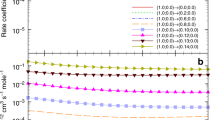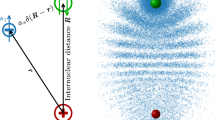Abstract
HEITLER and London have calculated the potential energy of the ground state of H2, and they have found besides the known 11S state, another potential energy curve which is called by them 13S. This curve is higher than the 11S curve by an amount equal to the heat of dissociation of the hydrogen molecule. Stuckelberg and Winans have used this curve to explain in a very nice manner the continuous spectrum of the hydrogen molecule. Their explanation, in brief, is that transitions from any one of the excited triplet levels to this 13S level give rise to a continuous spectrum.
This is a preview of subscription content, access via your institution
Access options
Subscribe to this journal
Receive 51 print issues and online access
$199.00 per year
only $3.90 per issue
Buy this article
- Purchase on Springer Link
- Instant access to full article PDF
Prices may be subject to local taxes which are calculated during checkout
Similar content being viewed by others
Author information
Authors and Affiliations
Rights and permissions
About this article
Cite this article
KAPLAN, J. Dissociation of Hydrogen by Collisions of the Second Kind. Nature 123, 162–163 (1929). https://doi.org/10.1038/123162a0
Issue Date:
DOI: https://doi.org/10.1038/123162a0
Comments
By submitting a comment you agree to abide by our Terms and Community Guidelines. If you find something abusive or that does not comply with our terms or guidelines please flag it as inappropriate.



